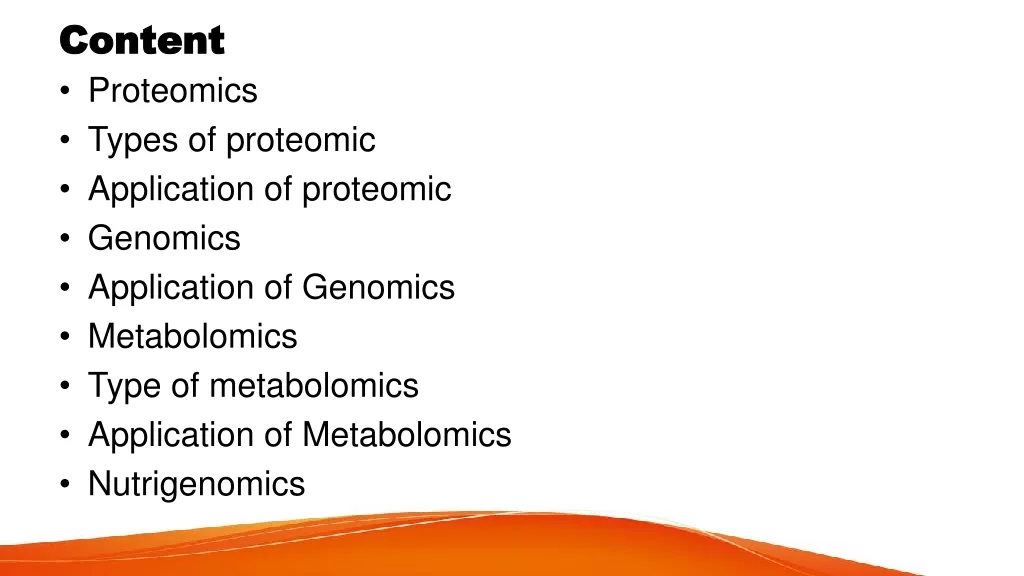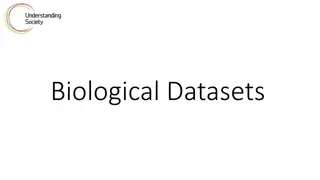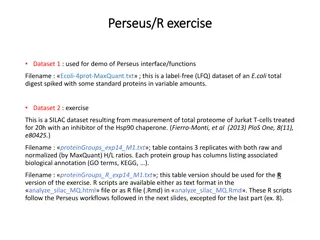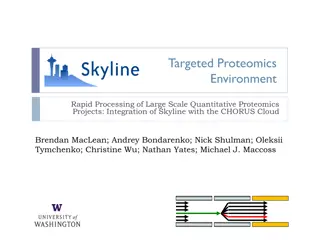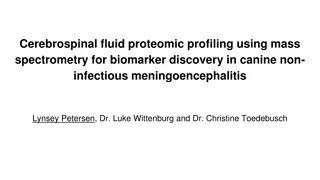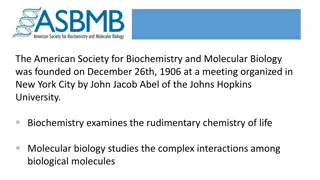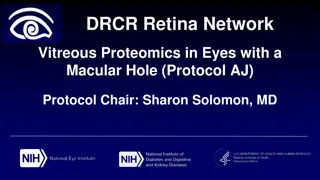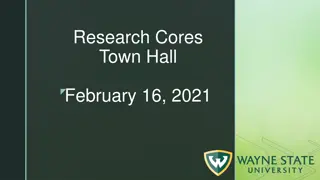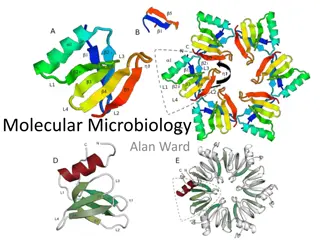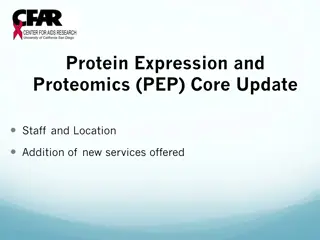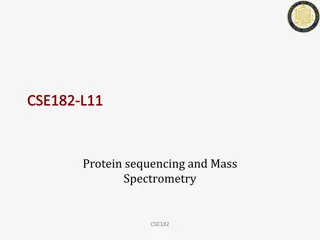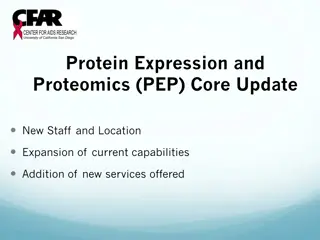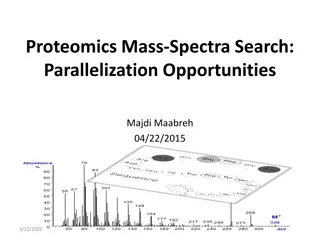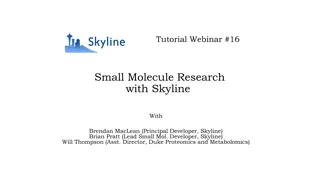
Understanding Proteomics and Protein Structure Prediction
Explore the field of proteomics and protein structure prediction, including the importance of protein sequencing, the study of proteomes, and the process of predicting protein structures through homology modeling. Discover how mass spectrometry and Edman degradation are used for protein sequencing, and learn about the steps involved in creating a homology model. Enhance your knowledge of proteins and their essential role in cellular processes.
Download Presentation

Please find below an Image/Link to download the presentation.
The content on the website is provided AS IS for your information and personal use only. It may not be sold, licensed, or shared on other websites without obtaining consent from the author. If you encounter any issues during the download, it is possible that the publisher has removed the file from their server.
You are allowed to download the files provided on this website for personal or commercial use, subject to the condition that they are used lawfully. All files are the property of their respective owners.
The content on the website is provided AS IS for your information and personal use only. It may not be sold, licensed, or shared on other websites without obtaining consent from the author.
E N D
Presentation Transcript
Proteomics Proteomics Dr B T Sulekha Assistant Professor P G & Research Department of Zoology S N College, Kollam Mob: 9495079217 sulekhabt@gmail.com
Proteomics Proteomics (PROTE PROTEin complement to a genOME Protein sequencing It is the practical process of determining the amino acid sequence of all or part of a protein or peptide. This may serve to identify the protein or characterise its post-translational modifications. The 2 major direct methods of protein sequencing are mass spectrometry and Edman degradation Mass Spectrometry methods are now the most widely used for protein sequencing and identification In biology, proteins are produced by translation of mRNA. The mRNA is itself formed by the transcription of genes and may be further modified these process are sufficiently understood to use computer algorithms to automate predictions of protein sequences from DNA sequences, such as from whole-genome DNA-sequencing projects. OME) The study of all the proteins in an organism (Proteome) and their interactions with their environment. Study in proteomics include investigations in quantitation, structure (3-diamensional and sequence analysis), function, interactions and modifications of proteins. In industry, protein separation and purification of proteins are also important aspects of proteomics
Protein structure Prediction & Protein structure Prediction & Modeling Modeling Proteins are macromolecules consisting of chains of aminoacids, which are at the heart of almost all cellular processes. the functional properties of a protein derive from its three dimensional shape (teritiary structure, which determined by its sequence of aminoacids (primary structure) Protein Structure Prediction (PSP) deals with how the prediction of 3D structure is done from aminoacid sequences. There are 3 major methods for predicting the structure of proteins Homology Modeling Comparative modelling/homology modeling exploits the fact that evolutionarily related proteins with similar sequences, as measured by the percentage of identical residues at each position based on an optimal structural superposition, have similar structures. This is a major goal of structural biology to predict the 3 dimensional structure of a protein from the sequences based on the structure of homologous proteins. The steps involved in creating a homology model as follows:
Steps involved in creating a homology model as follows: 1. Homologous proteins are identified and the extent of their sequence similarity with one another and the unknown is determined sequence data base search tools such as BLAST and FASTA are used to identify the related structures 2. Then sequences are aligned together with the help of multiple alignment tool ClustalW 3. Structurally conserved and variable regions are identified 4. Coordinates for structurally conserved (core) residues of the unknown structure from those of the known structure are generated 5. Conformations for the structurally variable (Loops) in the unknown structure are generated 6. The side-chain conformations are build 7. The unknown structure are refined and evaluated. Various software packages are available to evaluate the quality of protein structure. For example, PROCHECK, WHAT, Verify-3D etc The similarity of structure is very high in the so-called core regions , which typically are comprised of alpha-helices and beta-sheets. Loop regions connect these secondary structures and generally vary even in pairs of homologous structures with a high degree of sequence similarity.
MOLECULAR PHYLOGENY The branch of phylogeny that analyses hereditary molecular differences, mainly in DNA sequences, to gain information on an organism s evolutionary relationships. The result of a molecular phylogenetic analysis is expressed in a phylogenetic tree Molecular phylogenetics uses the structure and function of molecules and how they change over time to infer these evolutionary relationships. As computers have become more powerful and more generally accessible, and computer algorithms more sophisticated, researchers have been able to tackle the immensely complicated stochastic and probabilistic problems that define evolution at the molecular level more effectively. The main objective of molecular phylogenetic studies is to recover the order of evolutionary events and represent them in evolutionary tree that graphically depict relationships among species or genes over time. Molecular phylogenetic studies have many diverse applications like tracing the evolution of man and so on Molecular phylogeny builds a relationship tree . Every living organism contains DNA, RNA and proteins. In general, closely related organisms have a high degree of agreement in the molecular structure of these substances, while the molecules of organisms distantly related usually show a pattern of dissimilarity. The similarity of biological functions and molecular mechanisms in living organisms strongly suggests that species descended from a common ancestor.

